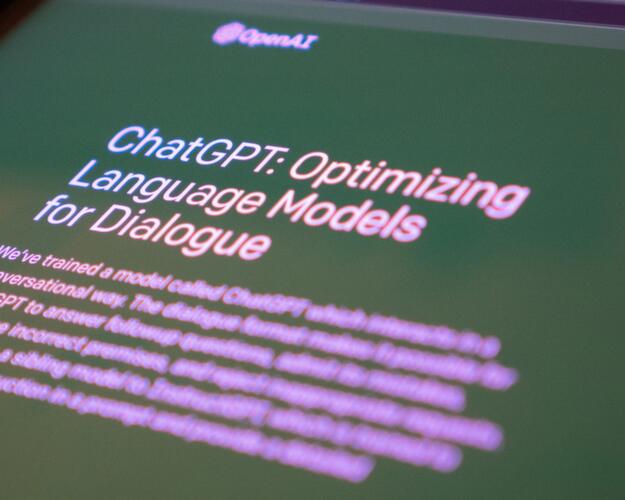Five ways to influence B2B decision-making, based on science
How psychology can be used to influence organisational decision-making

B2B content has two main goals: to be interesting enough that customers will provide their personal data to download it (and so capture leads); and to nudge customers towards a course of action which your organisation can support.
For the latter in particular, content needs to resonate. You are trying to convince someone to try something new. This is not convincing them to try a new chocolate bar; you are trying to get them to make a significant investment, on which their reputation and career progress may depend.
So here are some tips for making B2B content influential, based on science.
1. Tap into existing beliefs
People engage with and consume information that aligns with their worldview, and avoid or reject information that challenges them.
No-one wants to be told they are doing everything wrong. That their £5m investment was a waste of money. Talk of revolutionary new approaches may make good media headlines, but they are pretty scary to most decision makers.
But, when people receive information that affirms their beliefs and allows them to advance them, they are very open to taking action, and gradually changing their perceptions.
Content should take a starting point that the audience is likely to agree with, then show them how to do things better. Identify a problem your audience will recognise and relate to, perhaps a frustration you know they have (but not one of their own making). Then propose achievable and actionable ways to solve it.
2. Make people feel good about themselves

People are more rational at work than as consumers, but they still have feelings. They will probably not respond to obvious consumer tactics (this new software will make you more attractive!), but may be inspired by work-related positive messages, such as the prospect of recognition by superiors or customers.
If your product has a benefit for the world, that may provide a useful way to tap into positive user feeling, helping them picture how great they will feel when they deploy it. But keep it positive. Researchers found that people anticipating feeling pride in taking action were more likely to follow through, whilst those anticipating guilt for failing to do so were likely to ignore or dismiss the issue.
Think about what you’re trying to get people to do and how they would feel if they were doing it well.
3. Get your audience to engage their brains
As we explain here, decisions can be made by your impulsive ‘System 1’ brain, and your considered ‘System 2’ brain.
System 1 'impulsive’ thinkers in business will often go for the ‘safest’ option - the ‘no-one gets fired for buying IBM’ mentality (though perhaps some should).

If you are not the go-to brand, you should aim to engage the analytical ‘System 2’ brain. Once they do, they will start evaluating your offer on its merits - and chances are you are more targeted, dedicated, and cost effective than the industry leader. What’s more they’ll remember your message because they worked harder mentally to process it.
When you create your content, you can achieve this by pushing your audience to think. Comparisons of different scenarios make people more careful and more logical, so make for good content. The same is true of asking people to imagine a future where different decisions have been made.
4. Tell visual stories
People respond well to stories with a beginning, middle, and end; plot, conflict, and resolution.
Readers like to be taken on a journey. Stories of people in business who have solved problems and reaped the rewards can be a powerful way of rooting abstract concepts in reality. Using visual language engages the visual and emotional areas of our brains, helping them understand and remember, and apply the reasoning to their own situation.
5. Create Meaningful Calls to Action
Finally, conclude with actionable insight. Having invested time reading your article, how can the reader take that away and deliver benefit to their organisation and themselves.
These should inspire, so ‘Buy our product’ probably won’t cut it. But they should also be manageable, so ‘Start your digital transformation today’ is too vague.
Effective calls to action follow three rules: They are specific; the target audience can understand how the solution solves the problem; and they are something that audience is capable of doing.
Key Takeaways
Good content does the following for your audience:
- Helps them solve a problem they relate to
- Nudges them in the right direction, but doesn’t preach or criticise
- Makes them feel good about themselves – or offers a pathway to feeling good
- Makes them engage their brains with problems
- Uses narratives devices and visual language to bring ideas to life
- Is genuine, trustworthy and accurate
- Provides solutions that are actionable
Think of communication less as a megaphone and more as a gift to your audience.
Sources
In putting together this article we would like to thank:
- Researchers Ann Christiano and Annie Neimand for their thorough review of research into communication strategy, presented here. Italicised text is direct or edited quotes from their work.
- The work of Behavioural Economists Daniel Kahneman and Richard Thaler, and their books ‘Thinking Fast and Slow’ and ‘Nudge’
For more insights like this, sign up to our newsletter.









